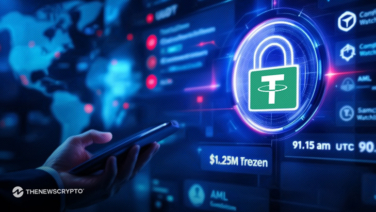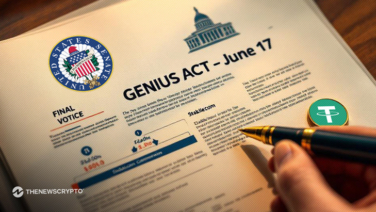- Stablecoins have shown notable increases in market cap in H1 2024 according to CMC data.
- The CEO of Circle stated that stablecoins will constitute 10% of all global economic money.
In H1 2024, the stablecoin sector witnessed 24.3% growth in market cap according to CMC data. It also dominated the DeFi sector and is stated to be a fast emerging digital asset. Popular stablecoins such as USDT and USDC showed substantial growth in users apart from increases in market cap. Moreover, currently, the fiat-collateralized stablecoins constitute 96.6% of the real-world assets market cap.
As stablecoins exhibit increasing prominence, let’s understand the asset by delving into their functioning, use cases, and some of the top stablecoins in 2024.
What are Stablecoins?
Stablecoins are crypto solutions to foster stability within the volatile cryptocurrency sector. In other words, Stablecoins are cryptocurrencies that aim to maintain stability by pegging their value to different external factors. These factors include Fiat currencies, other cryptocurrencies, algorithms, and other commodities such as Gold.
The cryptocurrency sector is very volatile, unlike fiat currencies which tend to show price changes very rarely. Thus, stablecoins value is pegged in a 1:1 ratio to fiat currencies. One example of a stablecoin is USDT, which is pegged to the US dollar and is issued by Tether Limited Inc.
When a stablecoin’s value is pegged to a particular currency, then for every token minted, reserves bearing the pegged fiat currency receive an equivalent. Stablecoins are often stated as bridging the advantages of both traditional finance and blockchain technology. They provide the stability of fiat currencies while functioning on the efficient blockchain technology.
How are Stablecoins Used?
Stablecoins are issued by particular crypto firms. These issuers hold the reserves that store the fiat equivalents for the cryptocurrency. When a user wants to exchange, they can do so, without incurring any losses.
While its primary function, as aforementioned, is to mitigate the crypto market’s volatility, users also utilize stablecoins for payments similar to other cryptocurrencies. Moreover, in developing countries, the tokens are used as USD banking methods due to scarce access to the US dollars. The USD-pegged stablecoins enable users to exchange their tokens for USD effectively.
Thirdly, the tokens hold utility in centralized crypto exchanges such as Coinbase as quote assets. These assets are common to all trading pairs, for instance, the BTC/USDT, ETH/USDT, and SOL/USDT. Stablecoins also find usage within Defi applications as payment gateways and also provide traders with advantages. For instance, traders lend stablecoins on Defi to gain additional interest as Defi platforms hold higher interest rates than USD.
Moreover, apart from these general use cases, each particular token brings in particular utility within its specific ecosystems.
Top Stablecoins to Watch in H2 2024
In the current crypto market, two stablecoins dominate – USDT and USDC. Tether USD holds the first position with a market cap of $113 billion approximately according to CMC data. USDC is the second largest stablecoin with a market cap surpassing $33 billion. MakerDAO-issued stablecoin DAI, Ethena USDe, and TrueUSD are other major stablecoins.
According to market analysts, these tokens hold the potential to reach new highs in the second half of 2024.
Tether USD (USDT):
Tether USD (USDT), the first fiat-backed stablecoin was launched in 2014. Since then the token has shown significant growth in terms of both users and market cap. According to Tokenterminal data, in the past month, Tether recorded 6.9 million active addresses.
Moreover, the token witnessed $70.2 billion in trading volume and has recorded a slight dip in the last 24 hours. The token’s current circulating supply stands at 113 billion out of the total 117 billion supply of USDT tokens.
Tether USD is expected to continue its dominance of the stablecoin sector with additional expansions into other sectors. The issuer plans to invest in renewable energy sources and has initiated new projects such as Tether Gold. The firm’s gold-pegged stablecoin project is called Tether Gold.
Moreover, the token has also seen global adoption as more eastern markets have integrated it into their network. Recently, in the past months, Tether also integrated into the Tron Network. Additionally, on Wednesday, Tether was listed on Indonesia’s leading exchange Tokocrypto.
Circle USD (USDC):
The second largest stablecoin in the market Circle USD (USDT) made its market debut in 2018. In H1 2024, the token has shown notable growth in its market cap. From $24.1 billion in January this year, the token currently holds as aforementioned over $33 billion.
Notably, USDC has also shown a significant increase in token holders over the past six years. According to Tokenterminal data, in January 2024 USDC token holders amounted to 2.8 million, while the current token holders count stands at 5.1 million. Moreover, Circle’s transaction volume as of July 17 stands at $13.567 billion.
Additionally, the token is one of the most-watched stablecoins this year according to market analysts. USDC plays a crucial role in global payments and enables trader profits through lending and borrowing systems.
Moreover, USDC issuer Circle has also expanded its USDC issuance on a global level. At the beginning of July, the firm announced the launch of its Euro-backed stablecoin EURC. Additionally, in a recent update, the firm has entered into a partnership with CryptoISAC, a crypto analytic center. It aims to fight cyber threats through this partnership stated CryptoISAC’s X post.
Dai (DAI):
DAI USD is issued by the prominent deFi platform MakerDAO. The token was launched in 2017 with a total supply of 5.3 billion tokens. Presently, the token’s total supply is in circulation. Additionally, in the past few months, DAI has shown notable surges in market cap surpassing prominent cryptocurrencies such as Polygon MATIC and PEPE on the CMC leaderboard.
Meanwhile, in 2023 MakerDAO introduced “The Maker Constitution” for ‘preparing for the future’ as stated by the firm. The Maker Constitution is a new governance approach that ensures the stability of DAI. Recently, MakerDAO also announced the launch of a new governance token.
Stablecoins at the Global Level
This year saw several advancements in the stablecoin sector both from existing markets and developing crypto sectors globally. US-based crypto giant Ripple announced the launch of its stablecoin, RLUSD, on April 4. Additionally, at the beginning of July, the Philippines launched its first stablecoin, the Philippines Peso Stablecoin (PHPS) pegged to the Philippine Peso.
Moreover, this market also witnessed surges in supply and on-chain activity. Specifically, Paypal’s stablecoin, PYUSD after expanding into the Solana network depicted a notable 97% growth in supply.
Additionally, the regulatory bodies in several countries, including the U.S SEC, in light of the sector’s growth, have scrutinized and imposed new regulations for the issuance and trading. Presently, the Hong Kong government has announced the list of stablecoin issuers who will take part in the sandbox, for examining their products.
In conclusion, this sector is expected to expand in both utility and dominance in the overall crypto market in the coming years. Notably, Circle CEO, Jeremy Allaire stated in June, that by 2025, stablecoins will make up 10% of global economic money.







